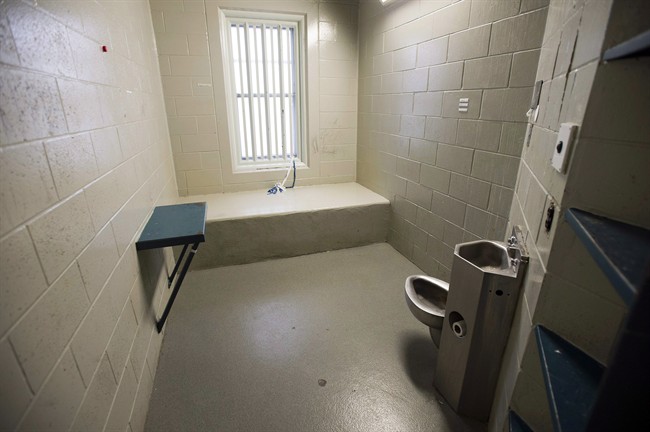TORONTO – A civil liberties group that has launched a constitutional challenge to Canada’s segregation laws told a Toronto court Monday that the rule of law must be brought into the country’s correctional system.

Canadian Civil Liberties Association lawyer Jonathan Lisus argued the federal government’s practice of administrative segregation is unconstitutional and a key statute requires a rewrite to protect inmates from harm.
The CCLA argues that the practice of administrative segregation amounts to indefinite solitary confinement, and has submitted evidence of several inmates who were kept isolated for years.
READ MORE: Federal government wants Ontario inmate segregation fight put on ice
Lisus argues the statute is flawed because it does not take into account harm against an inmate that is subject to solitary confinement.
“The statute does not require one to turn its mind to the impact on the inmate or the reasons for the isolation,” Lisus told court at the beginning of the week-long hearing.
He argued that there is no independent review as the current practice allows “the isolator” to review itself.
“There is no statute against the mentally ill or against those who have done nothing and are placed in isolation because of incompatibility,” Lisus told court, adding that incompatibility is too broad and generic.
“This is constitutionally flawed.”
There is consensus among a wide variety of Canadian medical organizations that such a practice causes harm as early as 48 hours that includes psychosis, hallucination, depression, anxiety, post-traumatic stress disorder and suicide, court heard.
“There is no serious debate or controversy about the harm caused by this practice,” Lisus said, adding that long-term effects include impaired memory and confusion.
“That will have an effect on inmates reintegration into society,” Lisus said. “One of the roles of the justice system is about rehabilitation and reintegration into society – This certainly doesn’t help.”
READ MORE: New Liberal bill will limit solitary confinement for prisoners
An inmate was transferred to a federal penitentiary and immediately placed in administrative segregation for 23 hours a day, for 138 days “without doing anything,” Lisus said.
While there are no current limits to administrative segregation, disciplinary segregation is limited to 30 days in solitary confinement.
In July, an Ontario court rejected the federal government’s attempt to delay the challenge because parliament had proposed legislation to address the issues.
READ MORE: Ontario’s corrections adviser urges ‘profound’ changes to segregation practices
Two years ago, the CCLA and the Canadian Association of Elizabeth Fry Societies launched the constitutional challenge, arguing the practice is harmful, amounts to cruel and unusual punishment, and means offenders are effectively punished more than once for the same crime.
The CCLA wants any administrative segregation stay to be limited to 15 consecutive days and never for an inmate with a mental illness or a young person aged 18 to 21 years old.
In response to the challenge, and a similar one pending in British Columbia, the Liberal government introduced Bill C-56 several months ago. The bill would limit administrative segregation to 21 days – a limit that would fall to 15 days 18 months after the legislation took effect.
- Trudeau tight-lipped on potential U.S. TikTok ban as key bill passes
- Canadian man dies during Texas Ironman event. Her widow wants answers as to why
- Hundreds mourn 16-year-old Halifax homicide victim: ‘The youth are feeling it’
- On the ‘frontline’: Toronto-area residents hiring security firms to fight auto theft



Comments